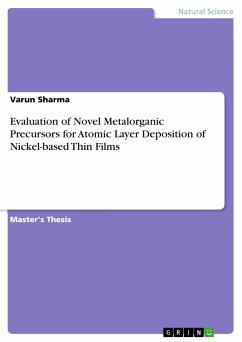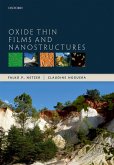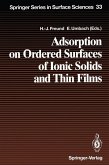Master's Thesis from the year 2015 in the subject Physics - Electrodynamics, grade: 1.0, Dresden Technical University (Faculty of Electrical and Computer Engineering/Institute of Semiconductors and Microsystems), course: Nanoelectronic Systems, language: English, abstract: Nickel and nickel(II) oxide are widely used in advanced electronic devices. In microelectronic industry, nickel is used to form nickel silicide. The nickel mono-silicide (NiSi) has emerged as an excellent material of choice for source-drain contact applications below 45 nm node CMOS technology. As compared to other silicides used for the contact applications, NiSi is preferred because of its low resistivity, low contact resistance, relatively low formation temperature and low silicon consumption. Nickel is used in nickel-based rechargeable batteries and ferromagnetic random access memories (RAMs). Nickel(II) oxide is utilized as transistor gate-oxide and oxide in resistive RAMs. Atomic Layer Deposition (ALD) is a special type of Chemical Vapor Deposition (CVD) technique, that is used to deposit very smooth as well as homogeneous thin films with excellent conformality even at high aspect ratios. In spite of huge number of practical applications of nickel and nickel(II) oxide, a few nickel precursors are available for thermal based ALD. Moreover, these precursors have resulted in poor film qualities and the process properties were also limited. Therefore in this master thesis, the properties of various novel nickel precursors had to be evaluated. All novel precursors are heteroleptic (different types of ligands) complexes and were specially designed by the manufacturer for thermal based ALD of pure nickel with hydrogen as a co-reactant. In order to evaluate the novel precursors, a new methodology was designed to test small amounts (down to 2 g) of precursors in a very time efficient way. This methodology includes: TGA/DTA curve analyses of the precursors, thermal stability tests in which the precursors (< 0.1 g) were heated at elevated temperatures in a sealed environment for several hours, deposition experiments, and film characterizations. The depositions were monitored with the help of in situ quartz crystal microbalance, while application related film properties like chemical composition, physical phase, thickness, density, roughness and sheet resistance were investigated with the help of ex situ measurement techniques. [....]









